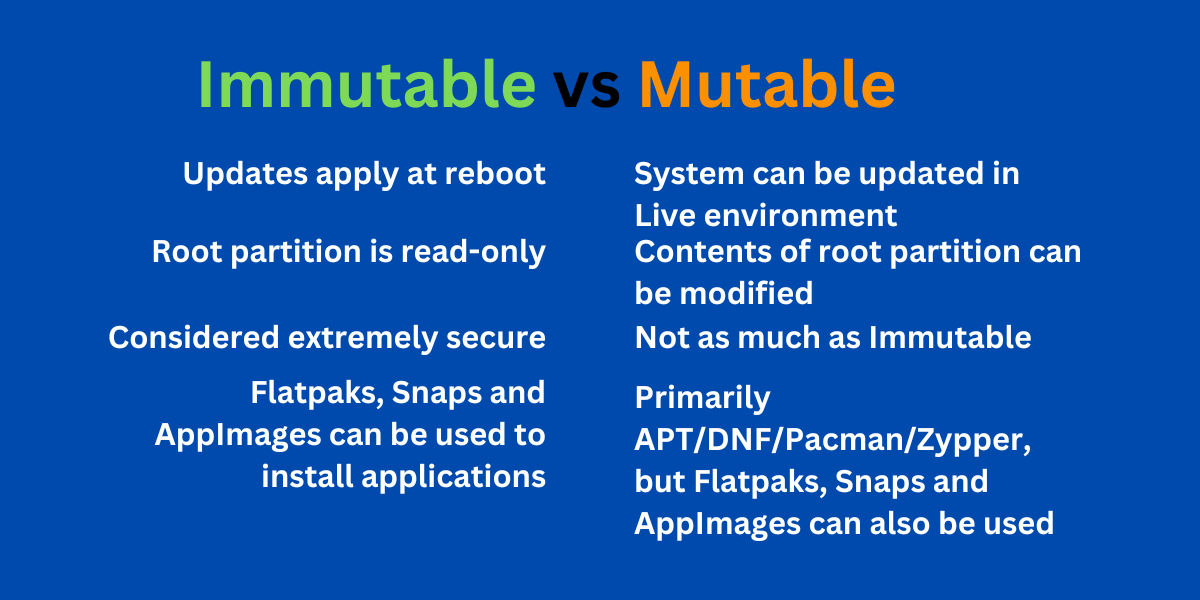this post was submitted on 13 Jan 2025
368 points (94.0% liked)
Linux
59446 readers
578 users here now
From Wikipedia, the free encyclopedia
Linux is a family of open source Unix-like operating systems based on the Linux kernel, an operating system kernel first released on September 17, 1991 by Linus Torvalds. Linux is typically packaged in a Linux distribution (or distro for short).
Distributions include the Linux kernel and supporting system software and libraries, many of which are provided by the GNU Project. Many Linux distributions use the word "Linux" in their name, but the Free Software Foundation uses the name GNU/Linux to emphasize the importance of GNU software, causing some controversy.
Rules
- Posts must be relevant to operating systems running the Linux kernel. GNU/Linux or otherwise.
- No misinformation
- No NSFW content
- No hate speech, bigotry, etc
Related Communities
Community icon by Alpár-Etele Méder, licensed under CC BY 3.0
founded 6 years ago
MODERATORS
you are viewing a single comment's thread
view the rest of the comments
view the rest of the comments

Immutable ≠ atomic
Bazzite is atomic (not immutable), same with Silverblue and other Fedora variants (they're all atomic, even on their main page it says atomic). It's kinda misleading ngl
Fedora Atomic IS immutable. Rpm-ostree just layers (or hides) stuff on top of the already existing image. If you layer something, e.g. Nvidia drivers, you still download the same image everyone else uses, but basically compile the driver from fresh and put it on top. And that takes time. This is the reason using rpm-ostree to layer stuff is not recommended.
That's why uBlue exists for example. It gives you a sane start setup, where all drivers are already built in into the image. And then you can either use the clean base and add your own stuff to create your own image, or use already great ones like Bluefin or Bazzite, where everything you want is already included.
Atomic just means that every process is either completed without errors, or not at all. This way, you don't get an half updated and broken system for example in case you loose power. Happened to me quite a few times already, but never with Fedora Atomic.
Pretty much anything outside of
/var/(even/home/is placed inside/var/) is read-only, and if you want to modify your install, you have to build your own image. Therefore, it is both immutable AND atomic.That's why I prefer the term "image based"
Isn't that just their nomenclature for immutable?
What's the difference between an atomic distro and an immutable one?
A distro can be both atomic and immutable, and they often go hand in hand.
Immutable simply means the core of a distro is read-only, meaning it cannot be modified by usual means. There are still ways to modify these files, but it works differently than in other distros.
Atomic distros are ones that update atomically. Atomic is used to describe an operation that cannot be cancelled in the middle of it, they either complete, or nothing changes. This means you can't break things by cancelling an update midway through. Atomic distros also often come with the ability to rollback to the previous build of the system.
Doesn't all immutable distros have updates that can't be cancelled and that will either complete or not change anything?
I only just started learning about immutable distros so I may be completely wrong but it's how I understand them to work when reading about it.
Immutable ≠ atomic, but they generally come as a package deal. Bazzite, Silverblue, and all those other distro's that call themselves atomic are also immutable. An atomic distro is just one with atomic updates, and an immutable distro is any distro with a read-only core.
These distro's have started mainly calling themselves atomic because they agree that immutable is a poor description that generally confuses users.